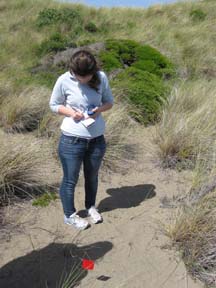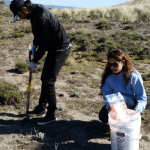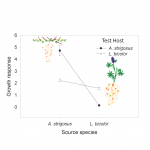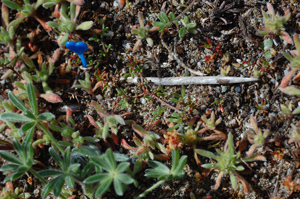 Bradyrhizobium refers to soil-dwelling bacteria that infect the roots of certain legumes (plants in the bean family) and fix nitrogen symbiotically in exchange for carbon compounds from their plant hosts.
Bradyrhizobium refers to soil-dwelling bacteria that infect the roots of certain legumes (plants in the bean family) and fix nitrogen symbiotically in exchange for carbon compounds from their plant hosts.
We’re trying to see if Bradyrhizobium cells disperse in rainwater during storms. First, we learned that the wind direction changes when a storm comes in. So, any bacteria that disperse as dry fall or by fog impaction will be dispersing from northwest to southeast whereas bacteria that disperse during rainy weather will be moving in the opposite direction.
This week, we got about 500 ml of rainwater at each of 18 sites along a transect within the Bodega Dunes. This involved tramping around in the dunes all afternoon and into the night, putting out sampling containers, which in this case are sterile canning jars, and then revisiting the sites to collect the jars before they overflow. That meant running all over the dunes in the rain! We got pretty soaked, but it wasn’t very cold, so it was an adventure.
We’ve filtered an aliquot of each sample for future sequencing and used the rest to inoculate trap plants. These plants nodulate Bradyrhizobium and they make different sized nodules, depending on the genotype, which is very convenient. This kind of assay is called a bio-assay, because we’re letting an organism count the cells for us. In a few weeks, we’ll count root nodules on those plants to tell if there were any Bradyrhizobium cells in the rain samples.




